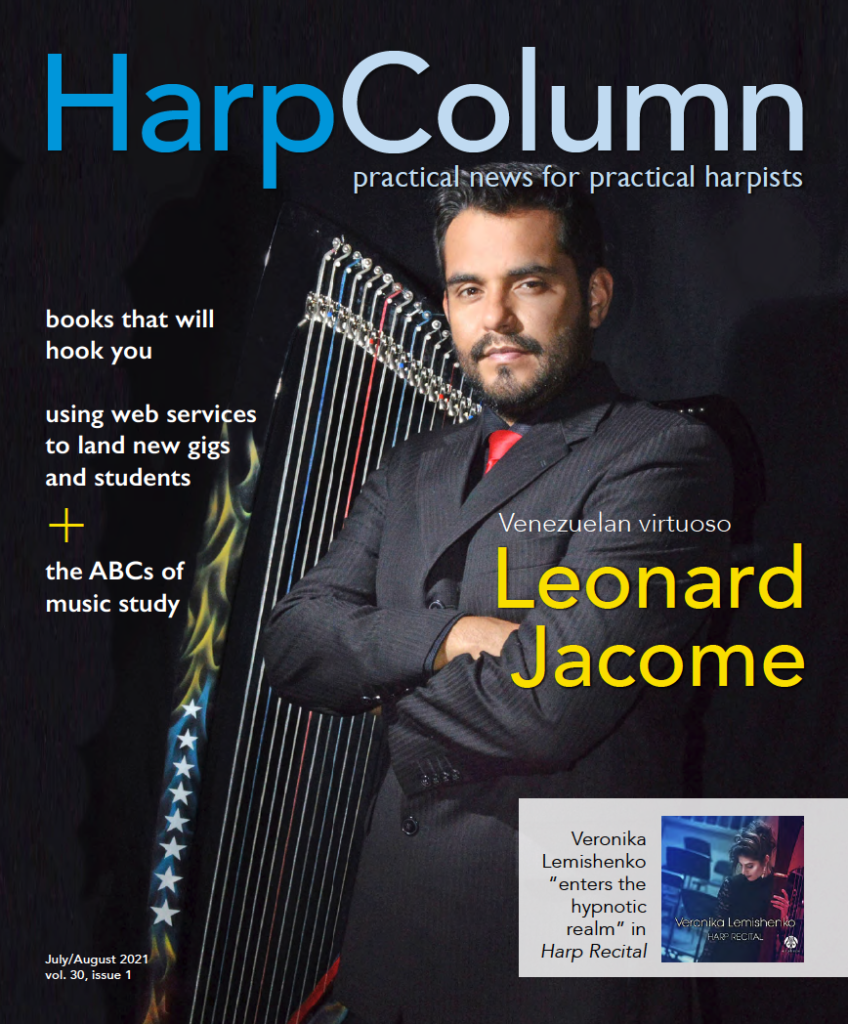Question: How can I get better and faster at playing one-handed trills?

The harp does not lend itself easily to trills, so trills require very careful and patient practice. The three topics to be worked on are late placing, relaxation, and strong, even tone. The constant muffling that occurs when placing for the next note creates an obstacle for the fluency of the trill. The secret is to place extremely late, basically at the same time as playing the other note. The goal is to avoid absolutely any “sitting” on the string. Being relaxed is critical: use arm oscillation and complete finger motion. Always practicing at least mezzo forte—if not forte—will train a good tone and singing quality of the trill. This should be supported by weight from the arm to avoid any tension. Ensuring that all fingers always place the same amount of flesh on the strings will also contribute to an even tone color.
Once under control in a slow tempo, it is time to use the metronome for speed work. Varying the rhythm and increasing the tempo in steps are both effective techniques for this phase. These three aspects are needed regardless of the fingering. Trills are an endless source of work!
—Franziska Huhn

Improving facility in one-handed trills relies on equal parts stabilization, relaxation, and quick finger work. First, stabilizing your forearm ensures proper support for your wrist, hand, and fingers. You may allow your right forearm to rest gently on—but not press against—the sounding board. For the left side, I suggest using your right hand (or asking a long-suffering friend) to act as a support for your left forearm until you have developed strength and stability.
Next, having a relaxed wrist is important for oscillation, or back-and-forth motion that propels the one-handed trill. Here’s an easy exercise: Set your metronome to 60 bpm and start with two notes per beat. Ensure your wrist is oscillating, and when you are ready, increase to three (then four, five, etc.). If your wrist stiffens, return to the previous speed until your wrist feels comfortable oscillating again. “Etude no. 6” from Salzedo/Lawrence’s Method for the Harp is also an excellent option.
Finally, play from the fingertips for quick articulation. This technique is the same as what you would use in fast scales. For 1-2-1-2 placement, a high thumb is ideal in the right hand, but a low thumb often works better in the left hand.
—Noël Wan

Remember why you’re doing the trill: its power comes from adding rhythmic and harmonic dissonance to the phrase. The speed itself is irrelevant. If we try to trill faster, thinking that this will make the passage exciting, we risk disappointment—and the temptation to think that the answer is even more speed. The trill is the frosting on the cake. It often attracts all the attention (from listener and player), but the cake is why we’re here. When we focus on the trill, we often lose sight of the actual musical goal.
While practicing, try subtracting the trill, playing the section without it. Explore conveying your musical intention without the ornament. This is the cake. The trick is to not unbalance things when you add the trill.
As for the trill, it’s useful to remember that one of the notes is consonant and one is dissonant. I like listening to these separately against the harmony, to understand which of the two trill notes is which. Since there’s a maximum speed and volume that any hand can play, it’s a good idea not to waste this speed budget by playing notes louder than they need to be. The perception of speed from the player’s point of view is often flawed. Maybe it’s a Zen koan thing—the way to have faster trills is to realize you don’t need them (or that you already have them)—which might also help you relax. And then you should probably eat some cake. •






